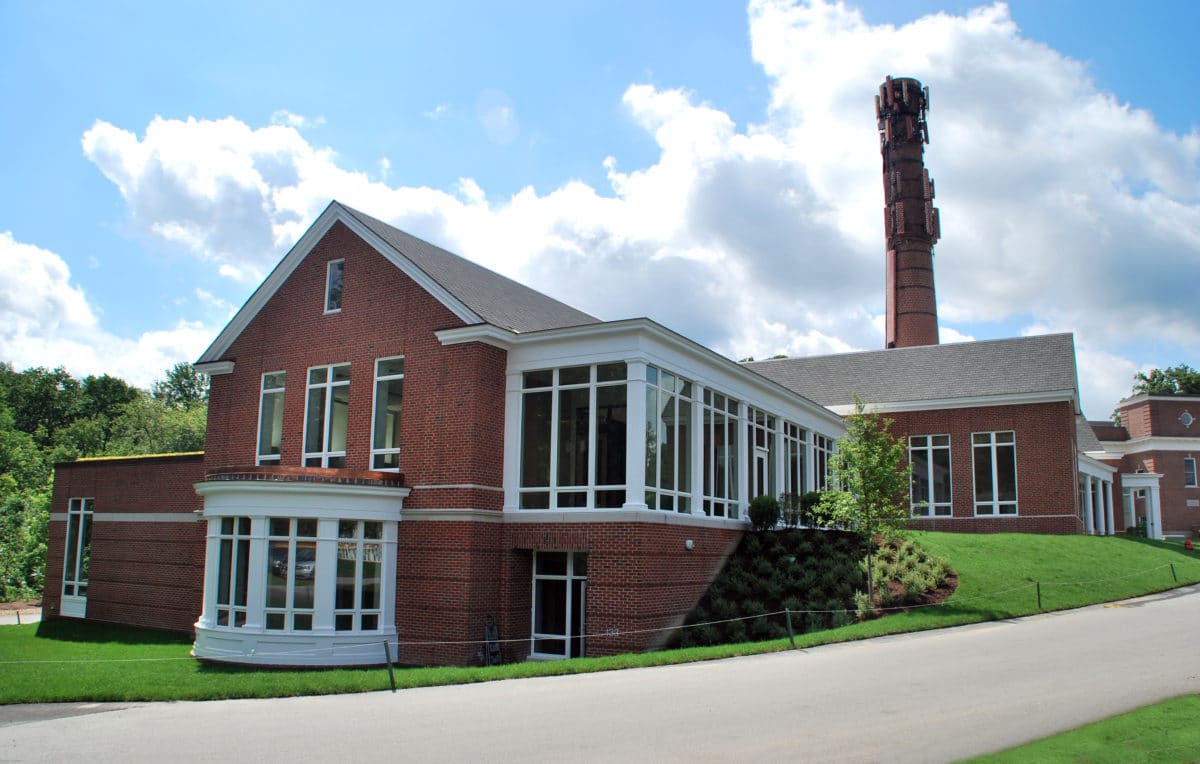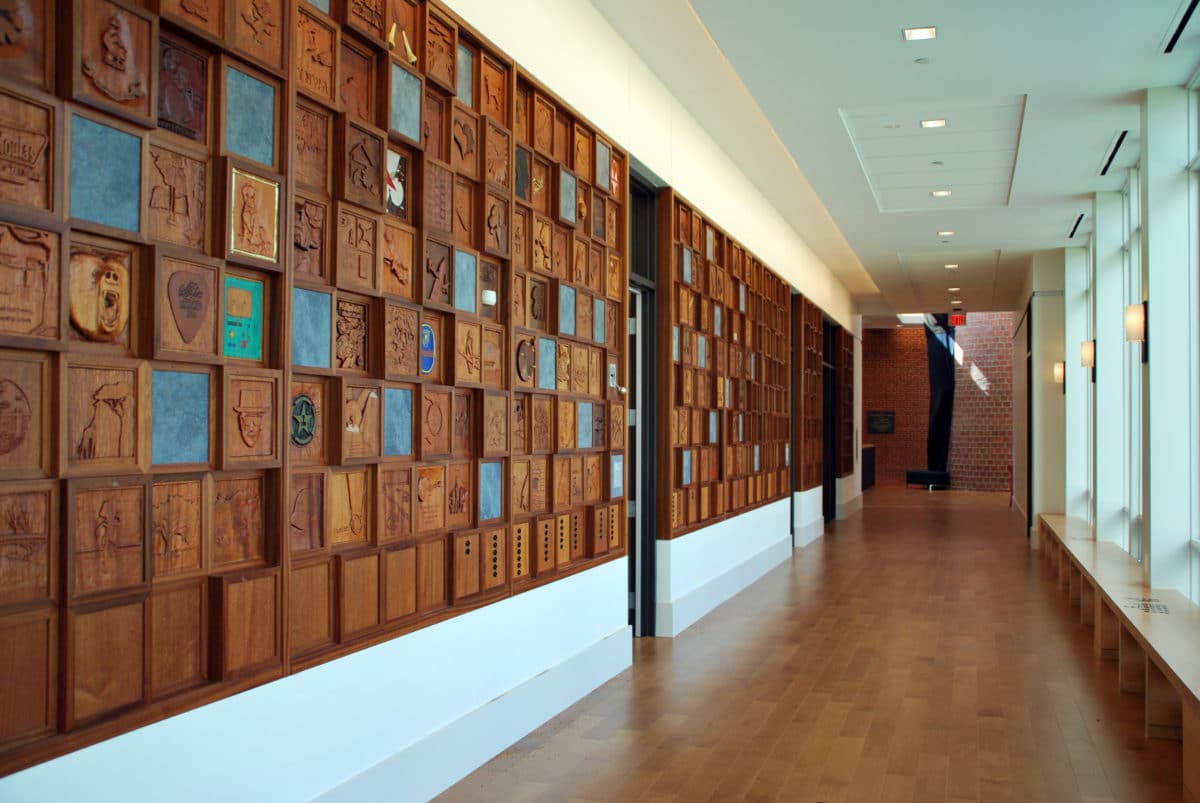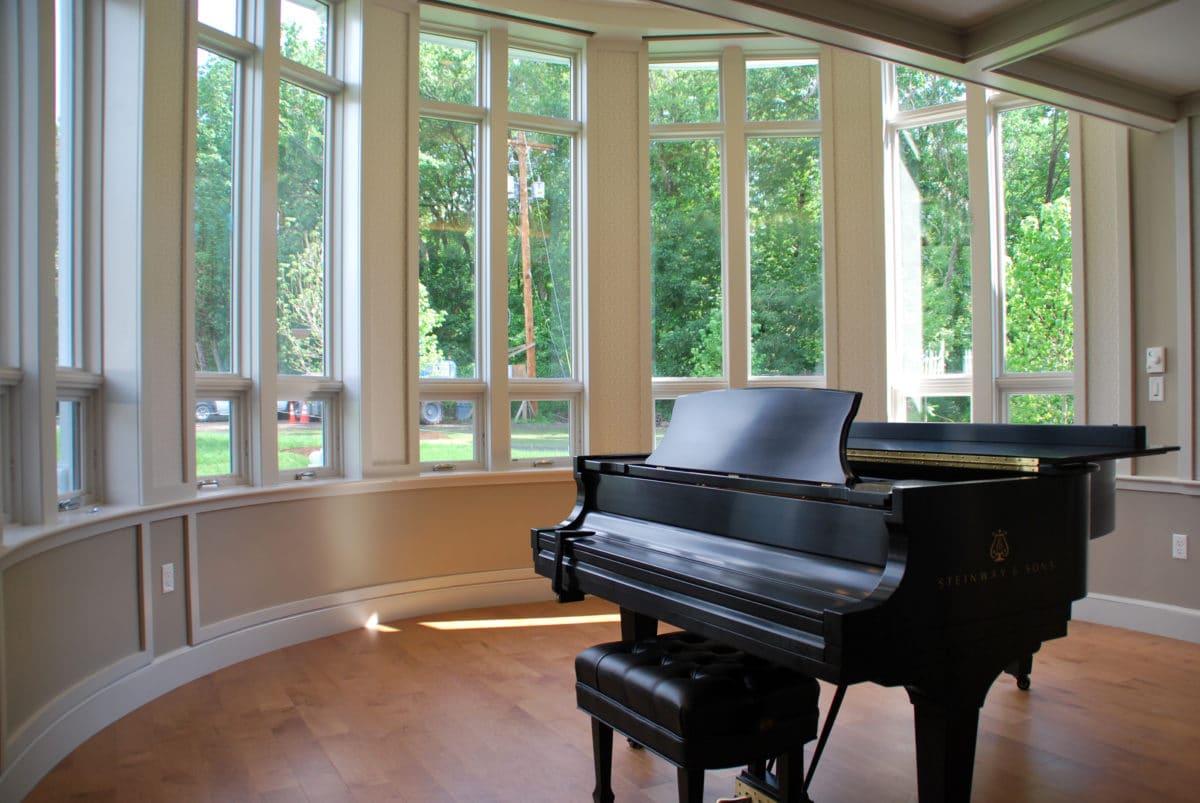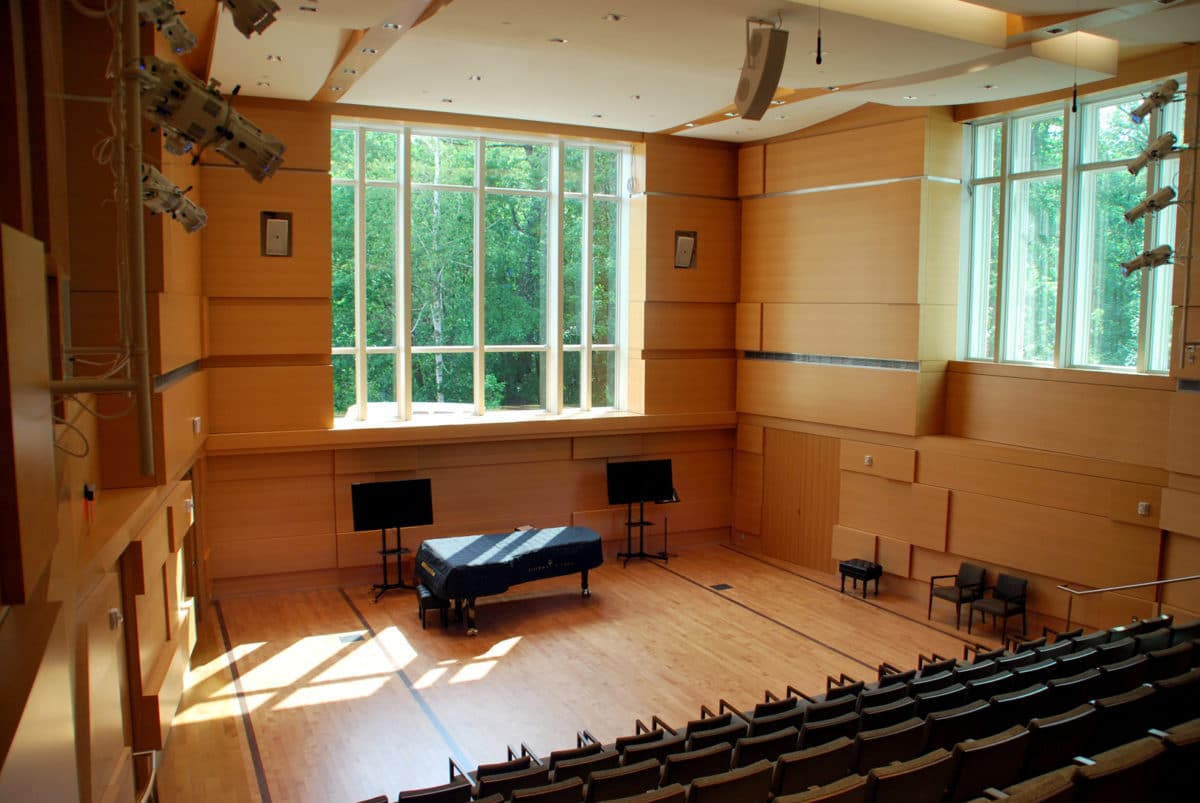
The Rachel Carson Music and Campus Center is now part of a former decomissioned power plant. [Photo: Courtesy of Windover Construction]
When the Middlesex School was founded in 1901, the entire 350-acre campus for the private boarding and day school in Concord, Massachusetts, was heated from a power plant on campus, where two large steam boilers burned coal in the early years and, more recently, oil. In the early 2000s, the school wanted a greener energy source and switched to natural gas, decommissioning the plant.
Around that time, the administration embarked on a strategic planning exercise to identify facility needs. At the top of the list: A space to house the school’s thriving music program, which was crammed into the library basement. “We try to be very, very careful about bringing on new square footage that is carefully calibrated to how our campus feels,” says Matt Crozier, chief operating officer at Middlesex. “The idea of ‘Let’s plop down a 20-000 square-foot music facility in the middle of a field,’ that was not something that our board of trustees took lightly.”

[Photo: Courtesy of Windover Construction]

[Photo: Courtesy of Windover Construction]
Instead, the team decided to replace that old power plant with a state-of-the-art music and performance hall—but rather than demolish the century-old structure, Middlesex opted for adaptive reuse, with local construction management firm Windover Construction leading the project.
The 22,000-square-foot Rachel Carson Music and Campus Center opened in the fall of 2017, boasting a 134-seat recital hall, classrooms, and a public study area. About 40% of the center is newly constructed, and the rest is housed in the renovated power plant. Luckily, the massive room that used to house the boilers—with 25-foot-high ceilings, thick concrete, and masonry walls—turned out to be the perfect home for a recital hall. The acoustics are great, and after cutting out some windows, the space was beautiful, lofty, and bright.
The building has a geothermal heating and cooling system, ionized window glazing to automatically shade the interior depending on how bright it is outside, and a green roof that helps manage storm water runoff and absorbs heat to offset cooling costs.

[Photo: Courtesy of Windover Construction]
The most challenging part of adapting the building was preserving the element that distinguishes it from every other building on campus: the smokestack. “We decided to keep the stack because we want students to know this building heated the campus for 100 years,” Crozier says. “To know we shoveled coal into this thing and heated you guys for the first 40 years and then we burned oil for the next 60 years, and as things evolved we moved on to greener energy, that’s an important part of keeping a campus going.”
But maintaining the 100-year-old stack in the middle of an active construction site involved some complicated logistics. When it came to underpinning—that is, increasing the foundation to support the weight of the growing structure—the team had to take a hopscotch approach, making sure there was always enough earth holding up the existing foundation before they dug into the soil to fill additional foundation below that.
Sounds maddening, but Stuart Meurer, president of Windover Construction, says that’s the kind of thing that makes adaptive reuse fun. “We enjoy doing that because there’s nothing mundane about it; there’s always something different,” he says. “Until you unearth the original building, you’re not really certain what you’re dealing with.”

[Photo: Courtesy of Windover Construction]

